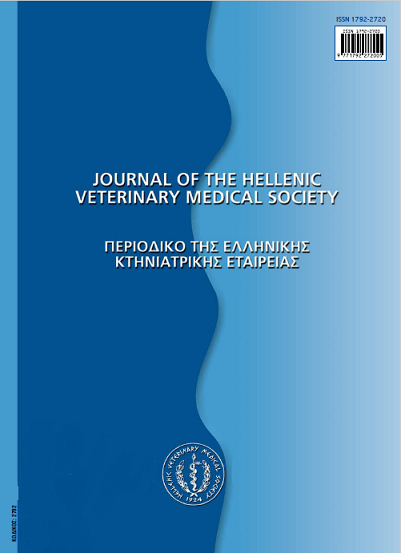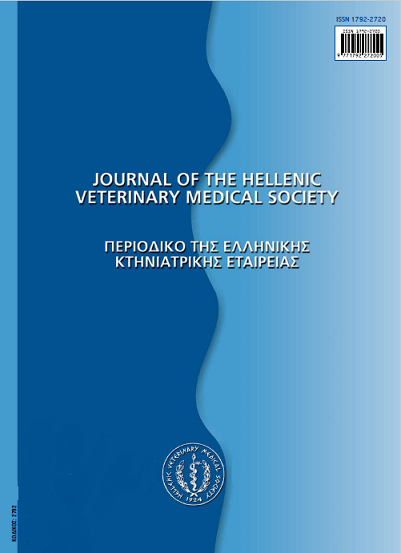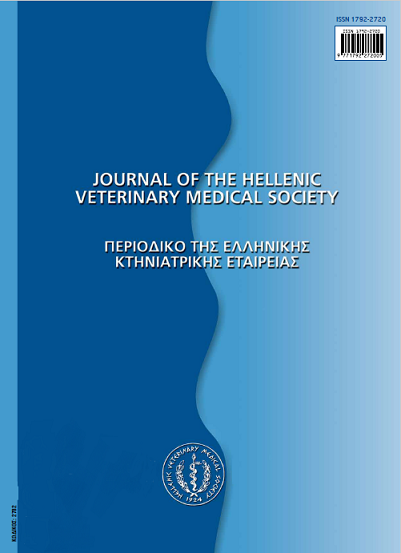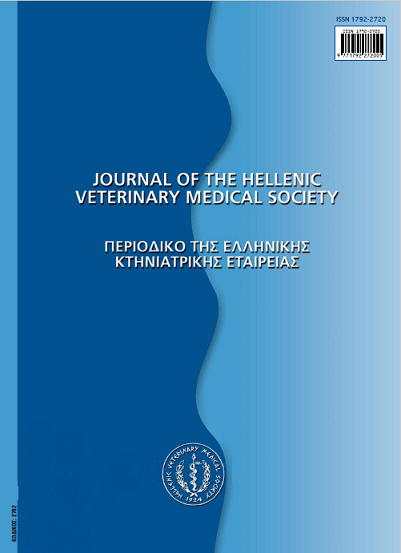Η ευζωία του κουνελιού κατά τη διάρκεια χρησιμοποίησης του σε πρόγραμμα θεραπευτικής προσέγγισης με τη βοήθεια ζώων, σε παιδιά

Περίληψη
Τα τελευταία χρόνια, η θεραπευτική συμβολή του ζώου συντροφιάς στην αντιμετώπιση διαφόρων νοσημάτων αποτελεί προσέγγιση που χρησιμοποιείται για την αντιμετώπιση διαφόρων παθήσεων. Κύριος σκοπός της θεραπευτικής συμβολής ενός ζώου είναι να βελτιώσει την ποιότητα ζωής των ασθενών, μέσω των δεσμών που δημιουργούνται μεταξύ ανθρώπου και ζώου. Παρά το γεγονός ότι ο σκύλος χρησιμοποιείται ως ζώο εκλογής για την κατάρτιση ενός τέτοιου θεραπευτικού προγράμματος, το κουνέλι αποτελεί ένα ακόμα ζωικό είδος, που μπορεί εξίσου να χρησιμοποιηθεί, εμφανίζοντας μάλιστα σημαντικά πλεονεκτήματα. Είναι μικρό σε μέγεθος, μεταφέρεται εύκολα, είναι έξυπνο και φιλικό προς τον άνθρωπο. Με βάση την εμπειρία από μακροχρόνια μελέτη της θεραπευτικής συμβολής ζώου συντροφιάς σε ογκολογικό τμήμα Παιδιατρικού Νοσοκομείου, το κουνέλι γίνεται εύκολα αποδεκτό και μάλιστα με θετική αποδοχή της παρέμβασης από το σύνολο των παιδιών και των συνοδών τους. Ενώ ένα πρόγραμμα θεραπευτικής συμβολής ζώου στην αντιμετώπιση κάποιας πάθησης καθορίζεται από καθαρά ανθρωποκεντρικά κριτήρια, σημαντική παράμετρος για την επιτυχία του προγράμματος είναι η διασφάλιση της ευζωίας του ζώου που συμμετέχει στο πρόγραμμα. Ειδικά για το κουνέλι, οι συνθήκες στέγασης και διατήρησης του κατά τη διάρκεια του προγράμματος, ο σωστός χειρισμός και ο τρόπος προσέγγισης του από τους ασθενείς, καθώς και η κτηνιατρική φροντίδα του ζώου, αποτελούν θέματα που θα πρέπει να καθορίζονται με ακρίβεια κατά τη διάρκεια του σχεδιασμού του προγράμματος, αλλά και να παρακολουθούνται κατά τη διάρκεια της υλοποίησης του. Η αξιολόγηση της ευζωίας των ζώων από εκπαιδευμένο άτομο πριν, κατά τη διάρκεια και μετά την ολοκλήρωση του προγράμματος, συμβάλλει καθοριστικά στηνέγκαιρη διάγνωση τυχόν προβλημάτων που μπορούν να εμφανιστούν στη σωματική και ψυχική υγεία του ζώου. Για τους πιο πάνω λόγους, η συμμετοχή κτηνιάτρου, τόσο στη διάρκεια του σχεδιασμού όσο και κατά την υλοποίηση ενός προγράμματος θεραπευτικής προσέγγισης με τη χρησιμοποίηση ζώου συντροφιάς, θεωρείται ιδιαίτερης σημασίας.
Λεπτομέρειες άρθρου
- Πώς να δημιουργήσετε Αναφορές
-
LOUKAKI (Κ. ΛΟΥΚΑΚΗ) K., KOUKOUTSAKIS (Π. ΚΟΥΚΟΥΤΣΑΚΗΣ) P., & KOSTOMITSOPOULOS (Ν. ΚΩΣΤΟΜΗΤΣΟΠΟΥΛΟΣ) N. (2017). Η ευζωία του κουνελιού κατά τη διάρκεια χρησιμοποίησης του σε πρόγραμμα θεραπευτικής προσέγγισης με τη βοήθεια ζώων, σε παιδιά. Περιοδικό της Ελληνικής Κτηνιατρικής Εταιρείας, 61(3), 220–225. https://doi.org/10.12681/jhvms.14889
- Τεύχος
- Τόμ. 61 Αρ. 3 (2010)
- Ενότητα
- Special Article
Οι συγγραφείς των άρθρων που δημοσιεύονται στο περιοδικό διατηρούν τα δικαιώματα πνευματικής ιδιοκτησίας επί των άρθρων τους, δίνοντας στο περιοδικό το δικαίωμα της πρώτης δημοσίευσης.
Άρθρα που δημοσιεύονται στο περιοδικό διατίθενται με άδεια Creative Commons 4.0 Non Commercial και σύμφωνα με την άδεια μπορούν να χρησιμοποιούνται ελεύθερα, με αναφορά στο/στη συγγραφέα και στην πρώτη δημοσίευση για μη κερδοσκοπικούς σκοπούς.
Οι συγγραφείς μπορούν να καταθέσουν το άρθρο σε ιδρυματικό ή άλλο αποθετήριο ή/και να το δημοσιεύσουν σε άλλη έκδοση, με υποχρεωτική την αναφορά πρώτης δημοσίευσης στο J Hellenic Vet Med Soc
Οι συγγραφείς ενθαρρύνονται να καταθέσουν σε αποθετήριο ή να δημοσιεύσουν την εργασία τους στο διαδίκτυο πριν ή κατά τη διαδικασία υποβολής και αξιολόγησής της.








